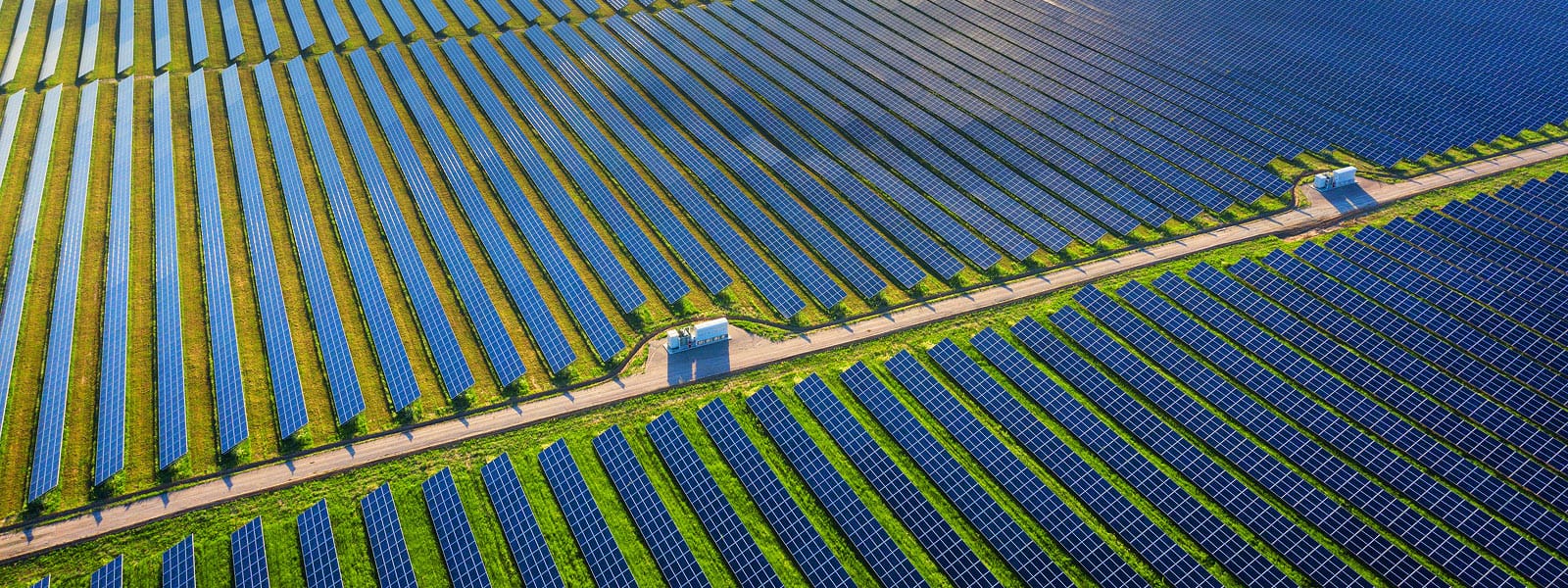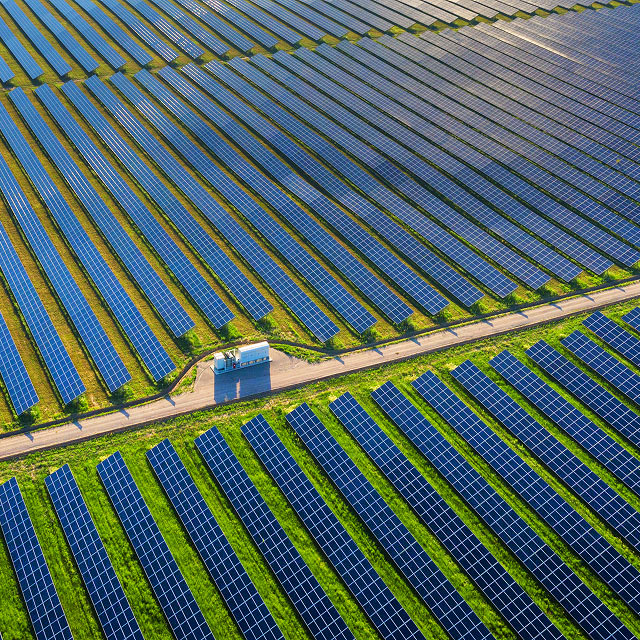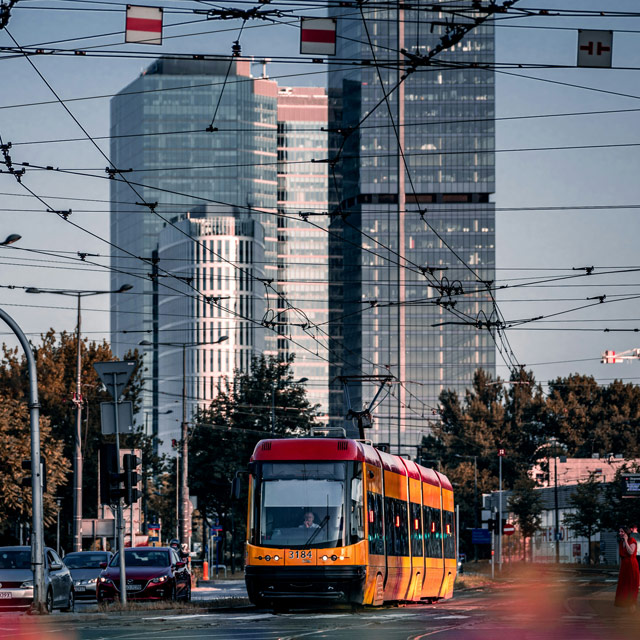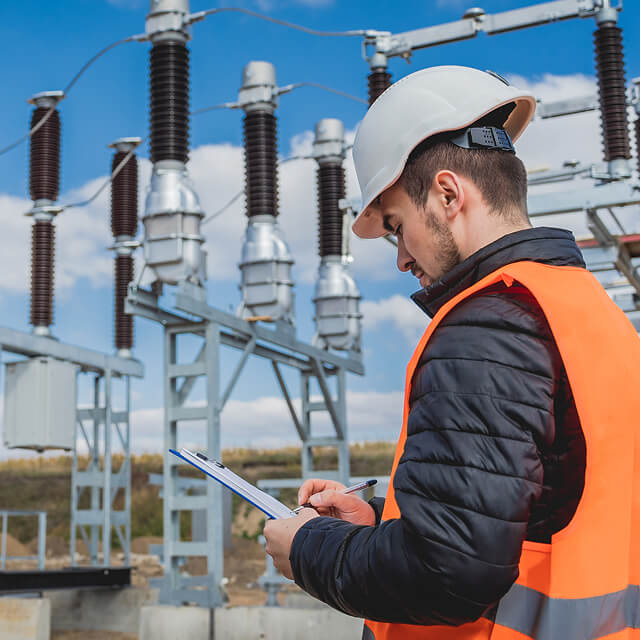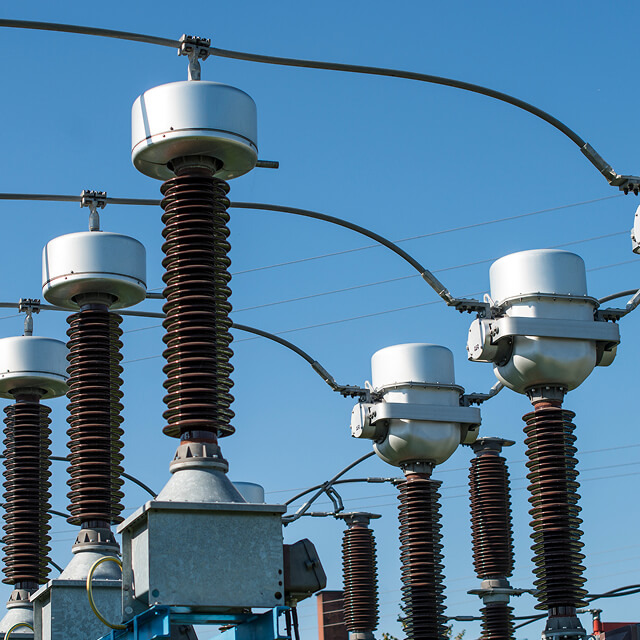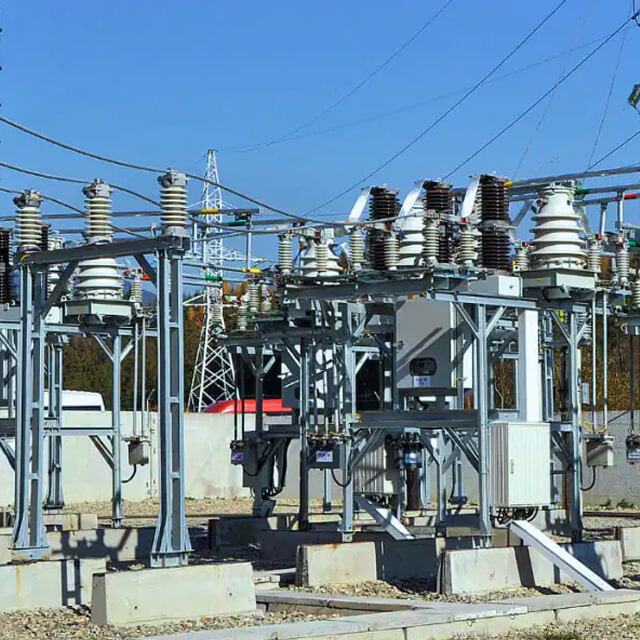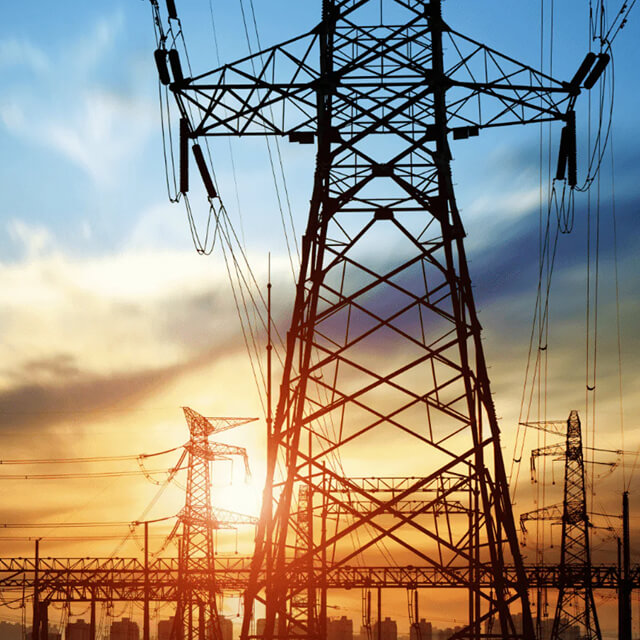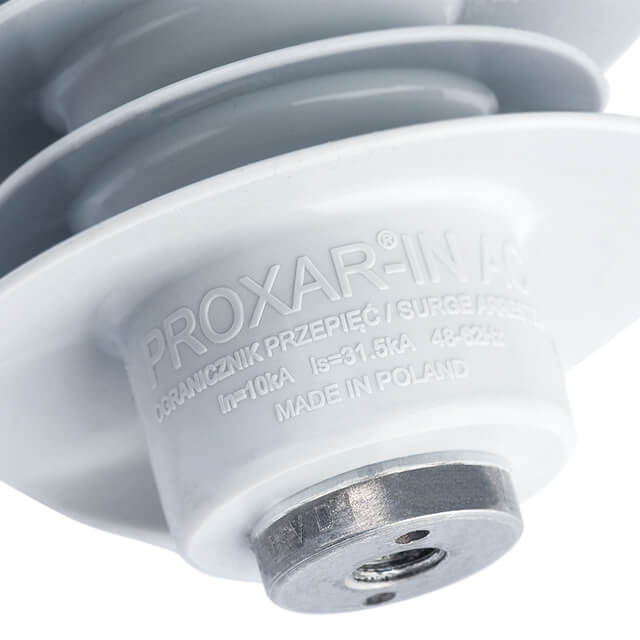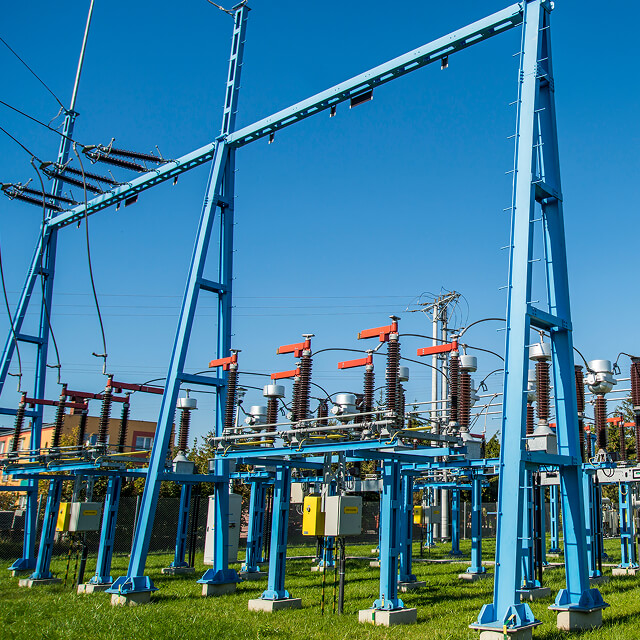The share of renewable energy in Poland’s energy mix continues to grow year after year, reaching a record high of 29.6% in 2024. A significant portion of this progress is due to solar panels, which now account for more than half of the country’s “green” energy production. In addition to rooftop solar panels on private buildings, large-scale solar farms are gaining popularity. But just how much power can the largest solar power system of this type generate? And how crucial is proper protection for ensuring the stability of PV installations? Let’s explore these questions.
Free consultationTable of contents:
- Why are photovoltaic farms particularly vulnerable to surges?
- Lightning discharges
- Switching surges
- Connections to medium (MV) and high voltage (HV) networks
- Effects of voltage surges on large photovoltaic installations
- The role of MV and HV surge arresters in the protection of photovoltaic farms
- How to choose the right surge arresters for a photovoltaic farm?
- Protection of photovoltaic installation – Long-term benefits of MV and HV surge arresters
- Summary
Few areas of the energy industry have experienced such dynamic changes in recent years as the PV installation sector. According to publicly available data, including reports from the Polish Photovoltaic Association, PV capacity in Poland nearly quadrupled between 2018 and 2020, increasing from 1.2 GW to 4.5 GW. By the end of 2024, total installed PV capacity had reached 21.2 GW. Today, photovoltaics dominate the renewable energy sector, making up as much as 62.9% of the total installed green electricity capacity.
Although solar energy in Poland still largely comes from independent PV power plants, including prosumer installations, large-scale photovoltaic farms are becoming increasingly common. Some of the largest, such as those in Zwartowo (204 MW) and Przykona municipality (200 MW), generate power comparable to mid-sized thermal power plants. Even considering slight variations in actual output, these solar farms provide energy to numerous households and industrial facilities.
We also mentioned the concept of peak power for a reason.
One of the inherent challenges of photovoltaic power generation is its efficiency, which depends on many factors. Among these are some that are virtually impossible to influence, such as air temperature and cloud cover. The effects of others, on the other hand, can be significantly minimized or even completely eliminated – voltage surges are one such factor.
What is essential for maximizing the performance of PV farms? One of the most critical aspects—perhaps even more important than protecting the photovoltaic panels themselves—is ensuring proper surge protection at the grid connection points. These are the locations where energy generated by the PV system is fed into the distribution network. If a surge damages such a point, it can no longer perform its function and all the electricity produced by the farm goes to waste.
Before discussing surge arresters for this purpose, let’s first examine the greatest surge risks affecting photovoltaic installations.
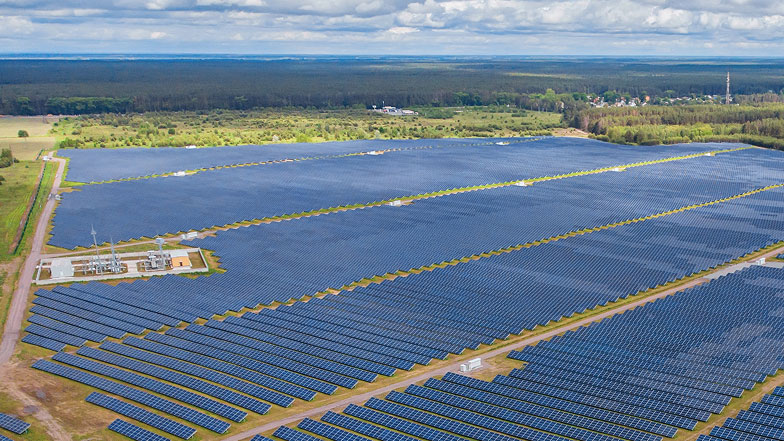
Why are photovoltaic farms particularly vulnerable to surges?
Surges are among the greatest risks to photovoltaic farms and they cannot be entirely eliminated. This is largely due to the nature of these installations, which span vast open areas and are interconnected by kilometers of wiring.
For components operating at medium or high voltages—our primary focus—the risk profile shifts even further. The direct connection to the power grid at the main connection points makes them particularly vulnerable to surges.
As a result, even a moderately strong storm can pose a serious threat to critical infrastructure. So, what are the main sources of surges in PV farms?
Lightning discharges
The most obvious source of surges in PV farms is lightning strikes.
Large photovoltaic installations are often located in open, undeveloped areas, such as plains or hills, which makes them more prone to lightning. Even in the case of indirect lightning strikes, surges can be induced in nearby electrical systems and spread through the infrastructure of the whole solar power system.
The resulting overvoltage can damage inverters, degrade PV modules, and even cause failures across entire sections of the farm. While direct strikes are unavoidable, the right external lightning protection system and surge arresters can effectively safeguard the installation.
Switching surges
The larger the farm, the higher the risk of internal surges. Hundreds or even thousands of meters of cabling act as natural "antennas," collecting electromagnetic interference and inducing harmful voltage spikes. Even with proper infrastructure protection, the vast scale of PV farms makes local voltage fluctuations inevitable.
Connections to medium (MV) and high voltage (HV) networks
Grid connections introduce additional risks. Any instability in the power network—such as sudden load changes, short circuits, or failures in other parts of the grid—can impact the PV installation. Surge impulses travel along transmission lines, and since PV farms generate fluctuating power, they are especially vulnerable to these disturbances.
Given these factors, surges are not just a possibility in photovoltaic farms—they are an inevitability. The real question is not if a surge will occur, but when and how severe its impact will be.
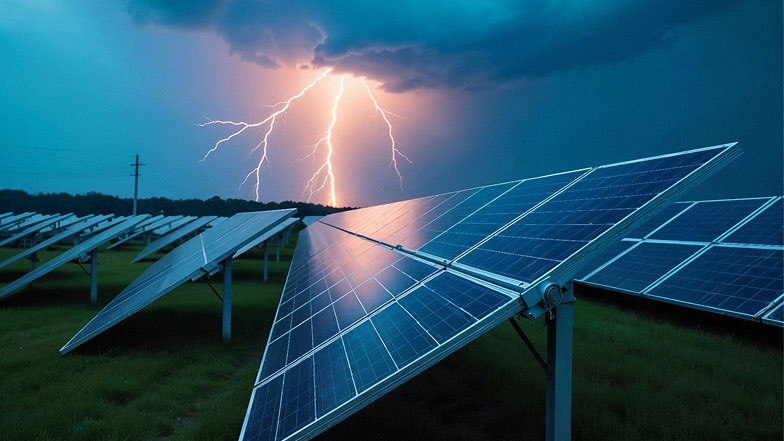
Effects of voltage surges on large photovoltaic installations
Unplanned interruptions in PV installations lead to financial losses. Any disruption in power generation reduces the amount of electricity supplied to the grid, which in large-scale PV farms can significantly impact revenue.
In grid-connected systems, power disruptions can have a cascading effect, causing local instabilities or even more serious energy balance issues at the operator level. This can result in lower profits for plant owners and potential penalties for failing to meet contractual energy supply obligations.
Beyond lost revenue, surges can physically damage key components of a PV installation. Inverters—responsible for converting DC into AC—are particularly at risk, and their failure can shut down entire sections of a farm. Similarly, repeated exposure to voltage spikes can degrade photovoltaic modules over time, reducing their efficiency even if no immediate failure occurs.
Surges can also affect grid infrastructure, including transformers and MV/HV switchgear, complicating restoration efforts after an outage. In extreme cases, severe surges can cause irreversible damage, leading to costly replacements and prolonged downtime.
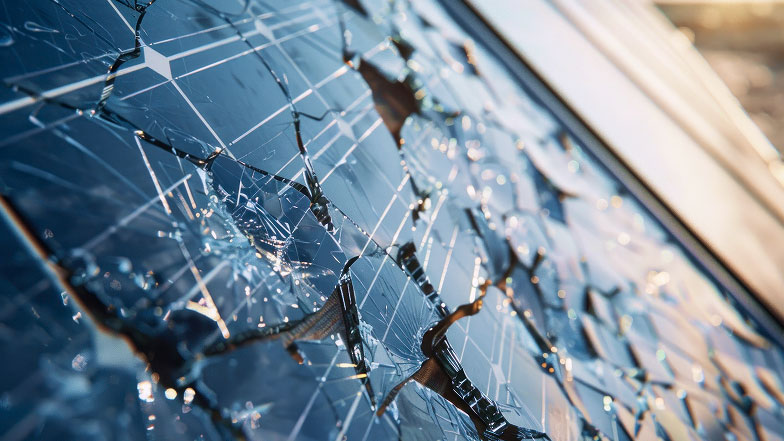
The role of MV and HV surge arresters in the protection of photovoltaic farms
While surges are an unavoidable aspect of PV farm operation, they can be effectively mitigated through proper protection measures. Medium-voltage (MV) and high-voltage (HV) surge arresters play a key role in this defense, absorbing and dissipating excess energy before it can damage critical infrastructure.
In large installations, surge protection is more complex than in smaller low-voltage systems. The high voltages involved require advanced protection solutions that can withstand extreme operating conditions. MV and HV arresters must be capable of handling both brief surge pulses and cumulative stress over time, ensuring long-term reliability.
Key factors to consider in selecting effective surge arresters include:
- Rated current, tailored to the specific protection requirements of the installation.
- Protection class, which defines how effectively an arrester suppresses different types of surges.
- Energy absorption capacity, ensuring that the device can handle repeated lightning discharges without degrading.
Given the harsh operating conditions in PV farms, these factors determine whether a protection system functions effectively or becomes another weak point in the network.
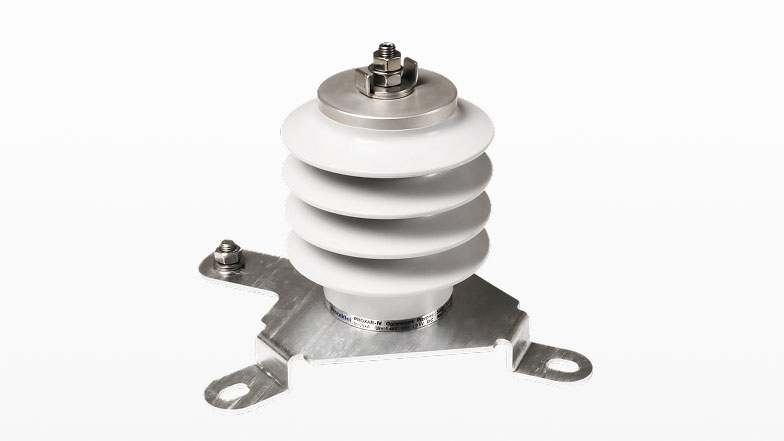
How to choose the right surge arresters for a photovoltaic farm?
The choice of surge arresters for a photovoltaic farm is a decision that can determine the reliability of the entire installation. In order for surge protection to be effective, a thorough needs analysis is required, taking into account both the voltage level of the system and the specifics of the individual infrastructure components. Different requirements will apply to the arresters used at the PV string level, others for inverters, and still others for the MV and HV lines through which the energy enters the grid.
The main aspect to consider here is integration with the existing power infrastructure. Arresters must be compatible with the network's operating parameters and appropriately positioned to effectively suppress surges generated in different parts of the system. Isolation coordination is also an important factor - inadequate devices can increase surge voltages at other points in the system instead of reducing them. Therefore, their placement and parameters should be adapted not only to the PV installation itself, but also to the MV/HV network to which it is connected.
One should also not forget the norms and standards that define the requirements for effective surge protection. IEC 60099-4, which defines the technical requirements for surge arresters used in MV and HV networks, plays a huge role here.
It is the one that sets the criteria for voltage rating, energy absorption capacity and resistance to repeated surge surges. Using equipment that complies with this standard is a guarantee that the protections will actually do their job under real-world operating conditions.
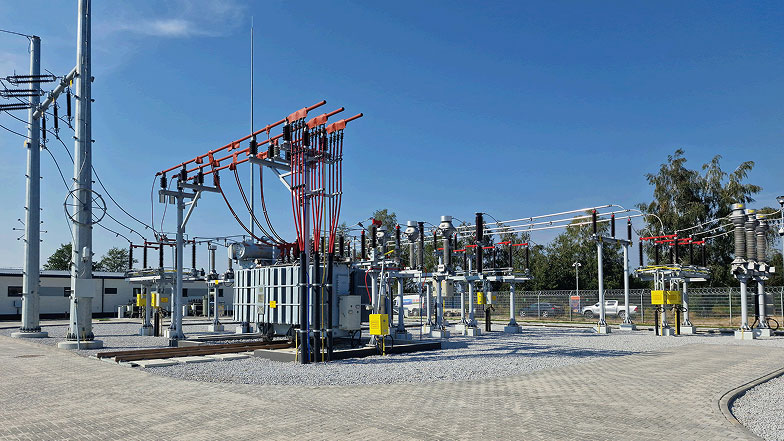
Protection of photovoltaic installation – Long-term benefits of MV and HV surge arresters
Frequent failures and the need for component replacements are among the biggest unplanned expenses in large-scale PV farms. Typically, these installations are designed for at least 20 years of operation, and minimizing equipment failures is essential to maximizing return on investment.
Properly selected MV and HV surge arresters significantly reduce these risks, protecting inverters, transformers, and the entire transmission infrastructure. Fewer failures mean less downtime, leading to improved efficiency and financial stability.
Surge protection also contributes to environmental sustainability. Every failure results in energy loss and generates waste from damaged components. Reliable surge protection minimizes these negative impacts, aligning PV farms more closely with the principles of sustainable energy production.
Furthermore, protecting power infrastructure from surges prevents unexpected grid instabilities. This helps avoid scenarios where sudden PV power losses must be compensated by conventional energy sources, further supporting the transition to renewables.

Summary
Investing in renewable energy comes with long-term financial planning, and unexpected failures can threaten the profitability of a project. Effective surge protection ensures that PV farms operate as intended, without sudden losses due to infrastructure damage. For investors, this translates to lower risk; for operators, it means greater system reliability; and for the renewable energy sector as a whole, it promotes continued development and stability.
In renewable energy, reliability is paramount. Surge protection isn’t just an expense—it’s an investment in the safety, efficiency, and future of photovoltaic farms. Looking for the best surge arresters to protect your PV installation? Schedule a technical consultation with us to find the optimal MV and HV surge protection solutions for your project.

